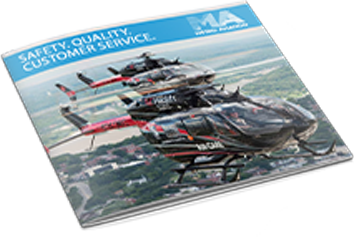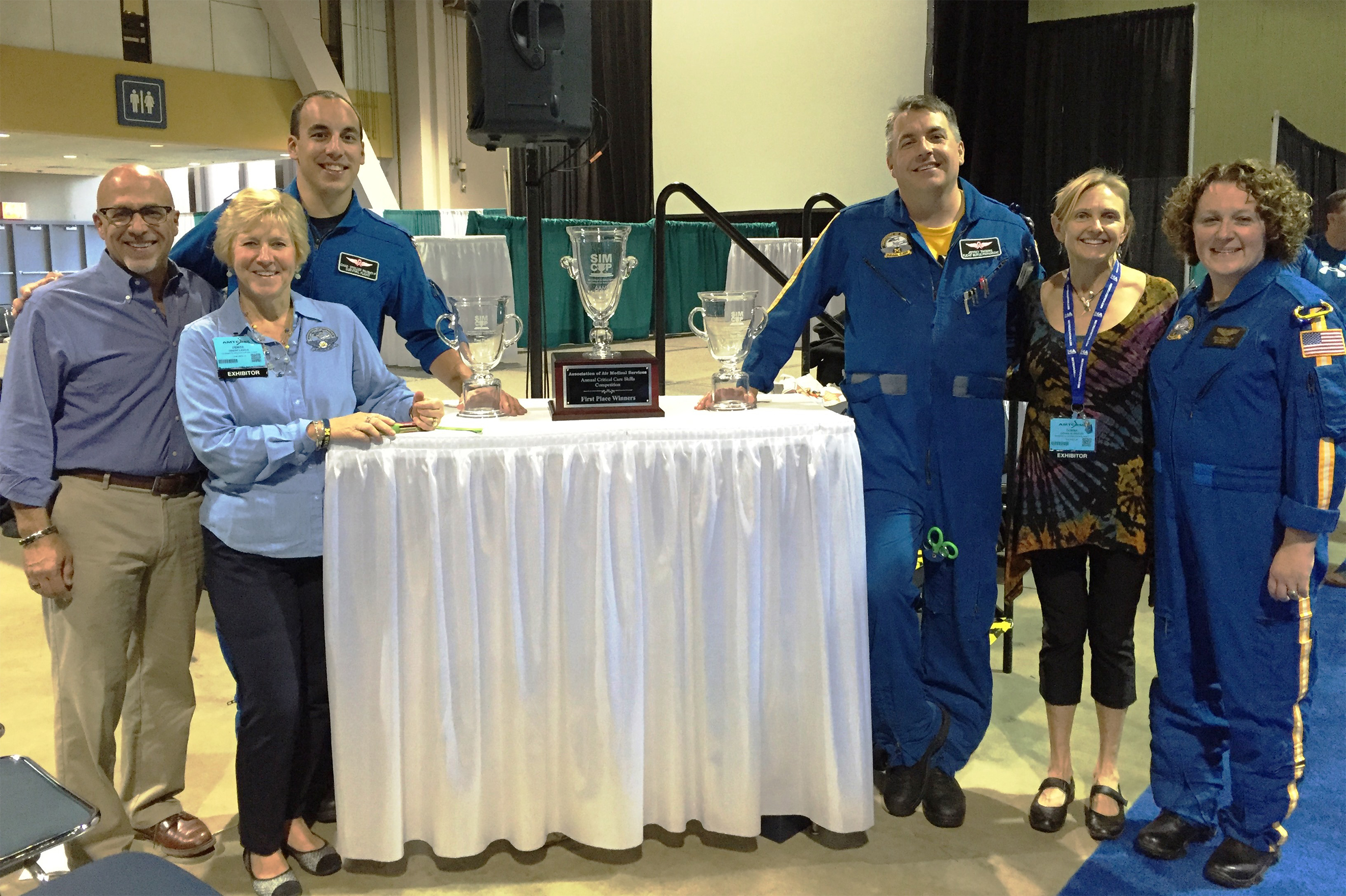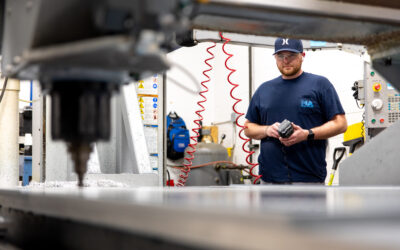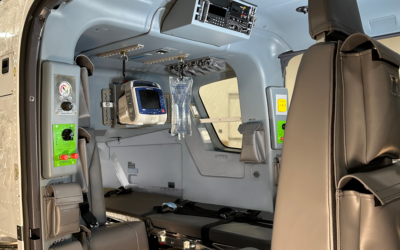November 2, 2015
From Survival Flight
If you think caring for severely injured patients is hard work, imagine doing it 2,000 feet above the ground and at 175 miles per hour. And if that doesn’t sound bad enough, perform all of those same caring techniques in front of hundreds of fellow medical professionals, video crews, and of course, judges.
U-M Survival Flight nurses Chad Stoller and Jeff Thomas didn’t let any of those factors intimidate them. After winning last year’s competition in Nashville, they emerged victorious again at the Air Medical Transport Conference in Long Beach, California with the international top honor – the Association of Air Medical Services 2015 Sim Cup.
The competition invites some of the top air medical services on the continent to participate in realistic emergency situations that test the skills and knowledge of each flight crew.
The competition begins with 10 teams of two flight nurses from the top air medical service programs across North America. The teams perform patient care scenarios for both a pediatric patient and an adult patient, and are scored based on their performances. The four top scoring teams move on to the final patient scenario, with the champions taking home the grand prize AAMS Sim Cup.
This year’s scenarios included:
· Adult patient: The crew is called to a remote village, which they must reach via a fixed-wing aircraft (the participants have to prepare inside a trailer to simulate the inside of the jet). They had to accurately diagnose and treat a postpartum female patient who is suffering from an abnormal heart muscle issue and also overdosed on anti-depressants.
· Pediatric patient: The crew is informed that a 70-year-old man has been injured in a car accident after hitting a tree. There’s also a 7-year-old boy who was hit by the vehicle and is hurt. They can’t land at the accident scene and have to travel to the patients in an all-terrain vehicle, which can only fit one person at a time. They need to diagnose, stabilize and treat both patients. The child has a laceration to the head and wrist fracture, while the man is suffering from a rupture in his heart and high potassium levels.
· Final patient: In the final scenario, the crew is asked to arrive at an intensive care unit to pick-up a patient. It happens to be the same adult patient from the car accident scenario (see above). The patient woke up from his sedation and ripped out his breathing tube. While the doctor was attempting to reinsert the breathing tube, he ended up causing trauma in the neck and mouth. Because of this, the crew cannot insert the breathing tube normally, and instead will have to cut into the neck to reinsert the airway. In addition, they have to determine there is blood around the patient’s heart and he is suffering from cyanide poisoning, due to a medication error.
“These sound like crazy, off-the-wall, scenarios,” Stoller says. “But some of these things could definitely happen, and we have to be prepared to handle anything.”
Advanced mannequins are used to simulate actual patients. But, don’t think these are just your average dummies. The mannequins have vital signs, symptoms and sounds, and act and react very similar to a live human being.
In addition, the participants have to narrate each of their lifesaving actions as they work, including diagnoses, treatments, and explaining their evaluation and decision processes.
“It’s crazy and hectic, but it’s a fantastic learning opportunity,” Stoller mentions.
This back-to-back win for Stoller and Thomas is the sixth international title for the Survival Flight team in the 13 years the competition has been held.
“We’re incredibly proud of our team and the strong performance they show each year at this competition,” says Survival Flight medical director, Mark J. Lowell, M.D., of the U-M Medical School’s Department of Emergency Medicine.
“The real value is in the preparation, as it is truly a team effort. Both their Survival Flight colleagues and physicians from other departments assist by practicing scenarios with them in the weeks and months leading up to the competition. The Cup is a testament to everyone’s hard work.”
Stoller and Thomas both mention studying and training are important for succeeding in this vigorous competition, as well as having the support of their colleagues and mentors.
“Dr. Lowell is instrumental in our training,” Stoller says. “We’re all competitive, but he sees the real educational component to this competition.”
Thomas agrees, “He comes in on his nights off to help us train.”
Seeing as Survival Flight had nearly 1,300 missions this past year, Stoller and Thomas had plenty of real-life scenarios to keep them busy before this year’s competition.
“This competition provides us with opportunities to learn how to better care for patients,” Thomas says. “The whole experience helps us be the best we can be in our line of work.”
“While this competition only lasts a couple of days, our crews are constantly performing these same lifesaving actions on a daily basis for our most critically ill and injured patients,” Lowell says.
To learn more about Survival Flight, visit their website.
Stay Updated with Metro
Metro Achieves AS9100 Certification
Metro Achieves AS9100 Certification APRIL 23, 2025 Metro is proud to announce that it has officially achieved AS9100 certification, marking a significant milestone in the company’s ongoing commitment to quality, safety, and continuous improvement in the aviation...
Metro Officially Recognized as a DoD SkillBridge Employer
Metro OFFICIALLY RECOGNIZED AS A DOD SKILLBRIDGE EMPLOYER APRIL 17, 2025 Metro Aviation proudly recognizes the talent, discipline, and strong work ethic that military members bring to its organization. With over 40% of its workforce made up of Veterans, the company...
Metro Aviation Unveils Upgraded H135 Air Medical Interior
Metro Unveils Upgraded H135 Air Medical Interior March 12, 2025 Metro Aviation is introducing its latest air medical interior for the H135, featuring notable upgrades while retaining popular elements from the previous design. “We developed this interior based on...
Download Brochure
Metro Aviation is constantly growing our capabilities and expanding our reach. Metro holds more than 30 Supplemental type Certificates (STC) and completes about 35 aircraft each year for U.S. customers anf global clients.





